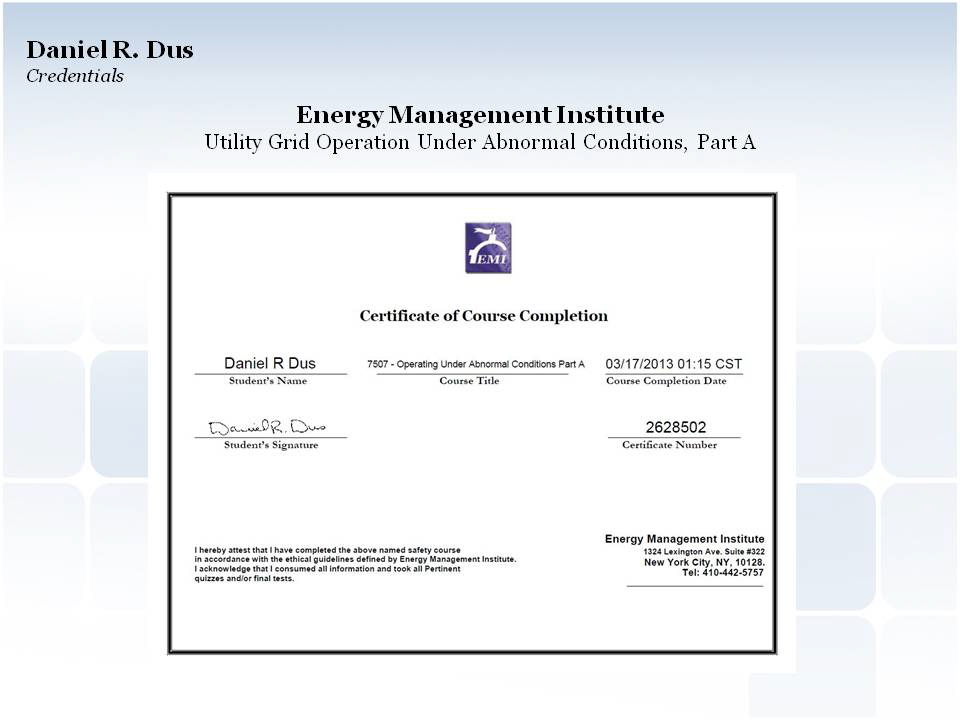UTILITY GRID OPERATION UNDER ABNORMAL CONDITIONS, PART A & B
The previous courses in this series have mainly dealt with the elements of the power system when it is operating in its normal state. This course extends that knowledge into the abnormal situations that can occur on the power system and describes how different pieces of apparatus can act under those conditions. At the end of this course you should be able to:
• Define the boundaries of normal operation
• List events that can move the system into an abnormal condition
• Draw a diagram showing the interrelation of the different states on the power system
• Understand the information shown on a control center dynamic wall map
• Describe the interrelation of system operators, regional operators, and plant operators
• List eight events that should be simulated to investigate how the system will behave under abnormal conditions
• Recognize the limitations of capacitor banks and generators to supply reactive power when the system voltage is declining
• Describe the relation between energy consumption and supply in a small part of a large interconnected system
• Describe how economy interchanges are made • Recognize how heavy economic interchanges on one interface can restrict the emergency support on other interfaces
• List seven strategies to prevent a system in the alert state from dropping into the emergency or blackout state
• Describe the use of a phase shifting transformer
• Understand the reasons for putting tie-line tripping relays on interconnections and the limitations that they can impose
• Describe how a part of the system can lose synchronism with the remainder of the system
• Write the equation for the maximum amount of power that can be transferred across a transmission line
• Understand why a relay can think that a line is faulted when the voltage vectors across the line are 180 degrees out of phase
• Recognize the main parts of a hydro-electric governor
• Describe the use of a dashpot bypass on a hydro-electric governor and the problems that can arise if the dashpot is bypassed when it is in an island
• Understand the difference between the temporary droop and the permanent droop on a hydro-electric governor
• Recognize the limitations imposed on hydro-electric machines by the finite amount of high pressure hydraulic oil
• Recognize how auxiliary governors destabilize islands where they control the dominant generators
• Describe how turbine blade resonances limit the under frequency operation of steam turbines
• Explain the difference between under frequency relaying and frequency trend relaying
• Recognize the water flow disturbances that can be caused by islanded operation and the restrictions to the operation of islanded hydro-electric plants
• Describe why a steam turbine may have a short burst of energy at the start of an island but then have its power output decay
• Recognize the need for load-frequency control in areas prone to islanding
• Describe the Ferranti effect on lightly loaded lines
• Understand why switching capacitors may not arrest a voltage collapse
• List the stages of a voltage collapse
• Describe the effect of a geomagnetic storm on transformers
• State the return period for geomagnetic storms
The Energy Management Institute (EMI) is the foremost innovative professional services firm providing insight into the energy future. EMI uses its specialized energy market expertise to bring a wide array of services and products to energy professionals. EMI is dedicated to providing the most comprehensive and exciting training experiences available to energy professionals. EMI is an education partner with the New York Mercantile Exchange (NYMEX), providing training to the domestic and international exchange communities.


